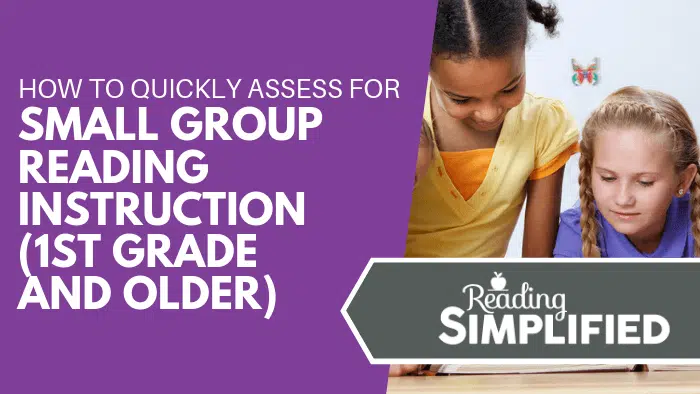
Searching for an easier, quicker way to assess your mid 1st Grade or older students for small group reading instruction?
In our previous post, “How to Quickly Assess for Small Group Reading Instruction (K-1)” we talked about grouping kindergarten to first-grade level readers. But, in this post, we’re exploring how three simple activities (Switch It, Read It and Sort It) can help you to assess students in 1st grade or above for small group reading instruction.
If you’re new around here, welcome! You may not be familiar with the three core activities we teach here at Reading Simplified – Switch It, Read It and Sort It. To find out more about them, go to readingsimplified.com/start-here
All caught up?
Great! Let’s get started!
(To watch the video where I discuss how you can quickly assess for small group reading instruction for 1st grade and older, hit play below or read on for a detailed overview)
How 3 Tests Can Make Your Groups for Mid 1st Grade & Above Readers
When it comes to grouping mid-1st grade level readers and above, here are three easy tests you can turn to:
1. Nonsense word reading (standardized)
2. San Diego Quick Assessment (Word ID)
3. Reading Rate (fluency) that relates to Word ID above

Test #1 – Nonsense Word Reading
A standardized nonsense word reading is necessary so that you can compare a student’s progress with other students of the same age.
Nonsense word tests encourage students to rely on their sound-based decoding skills to tackle a word, rather than relying on memory. You can give a student a test like this by showing her a list of nonsense words such as mant, sost, glamp, spren and so on.
Keep score as you go and if you find that she is flying through the CVC or the CVCC words, continue to increase the difficulty level. Stop when you reach the point where the student is unable to read the nonsense words in any given level.
If you want to grab a FREE nonsense word test, go to readingsimplified.com/reading-test, where you’ll also find a standardized, normed test too!
Test #2 – San Diego Quick Assessment (Word ID)
The San Diego Quick Assessment is a free measure test that you can use to identify a child’s word identification level. So, you would essentially give students a list of graded words and test them to see how well they do with those words.
The San Diego Quick Assessment is a great way to get a reasonably accurate estimate of a student’s reading ability. It’s designed to indicate a child’s ability (or inability) to read words at each grade level. The results will help you to find appropriate reading materials for each student.
Again, you can access free word identification tests right here: readingsimplified.com/reading-test
Test #3 – Reading Rate that relates to Word ID above
Finally, you need to give your kiddos a reading rate test that relates to their performance or the outcome of the previous word identification test. Once you know a child’s word identification level and discover that he can read 2nd-grade level words, for example, you should give him a 2nd-grade level passage to check his reading rate.
The key thing here is always to give the student a reading rate passage that’s at his word identification level. You need to base your choice on the student’s word ID. Then, choose a graded passage to give to the student to read aloud.
I suggest that you time him reading that passage. All you need is one minute of words read correctly. Then, compare the results to the norms. You can find a link to this information at readingsimplified.com/reading-tests
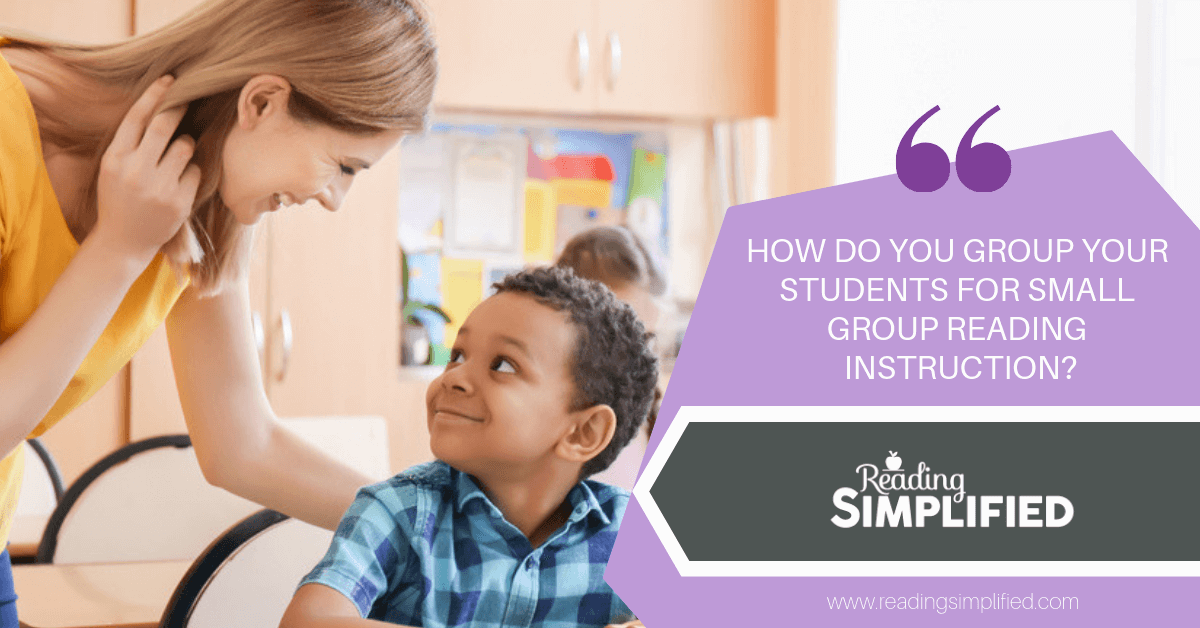
Grouping for Switch It
Now that you have the background knowledge you need, you’re ready to start grouping your students. We do this in a very similar way as we did in our previous post where we discussed how to group kindergarten to early 1st grade level students for small group reading instruction.
The first step is to take the nonsense word reading test you just did with your students and use the results to place them in the correct range. For example, if a student can read CVC mostly, you would start her with Switch it CVCC words.
Remember, just because a student is great at CVC words that doesn’t mean they should stick to CVC words. You always want to be moving him up to a higher, more difficult level so that they keep learning and accelerating his reading achievement.
Take a look at the image below to see how and where to group your students:
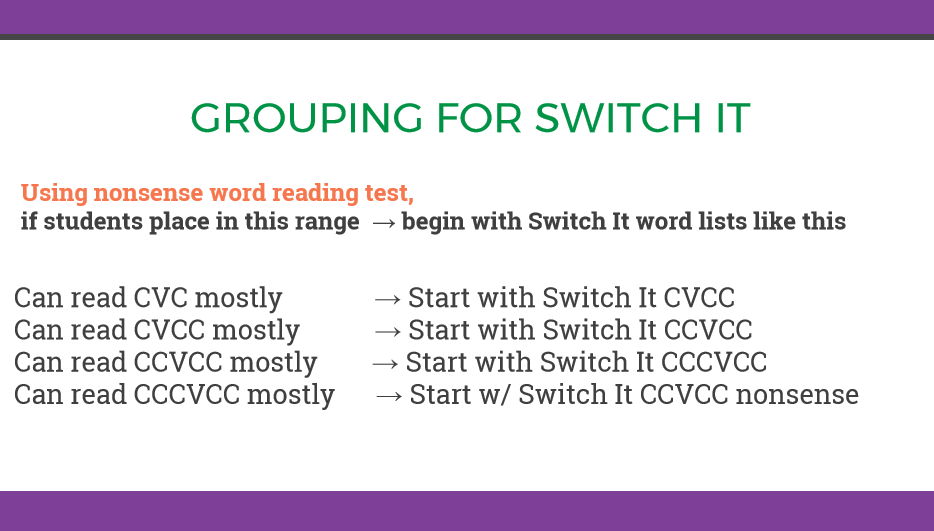
Grouping for Sort It
Most 1st grade and above readers will be ready to move onto Sort It quite rapidly. This activity is perfect for anyone who isn’t as fluent as you’d like them to be. Perhaps you’ve got students who aren’t too far above their grade level and so, you want to give them an extra boost!
But, how can you tell if a student should move onto Sort It?
It’s simple! If a student can read CVC nonsense words, for the most part, it’s time to begin Sort It with her. For the students who read at higher grade levels, you can move them onto harder word lists.
Group Students Based on the Streamlined Pathway
If you take a look at the image below, you’ll see the 1st grade streamlined pathway laid out for you. You can use it to review where your students fall and identify what activities and areas you need to focus on for those students to move them through the pathway.
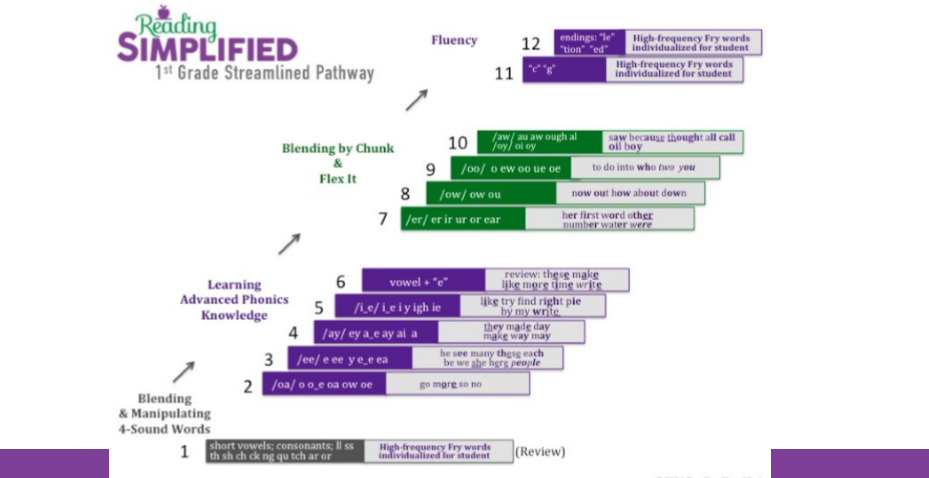
If you would like to get your hands on the FREE reading assessment tests for small group reading instruction that I talk about in this post and video, just leave your name and email address below and your free downloadable PDF of the Snapshot Informal Reading Assessment will be delivered straight to your inbox!
Do you have an assessment system that helps you group students for small group reading instruction? Let me know in the comments!

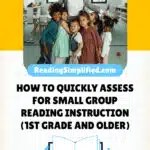



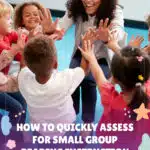

Love the simplified instructional tools and resources I have received. Thanks
Wonderful!! Thanks for letting us know, Sandra. 🙂